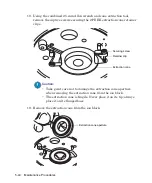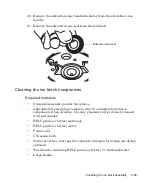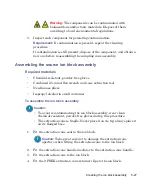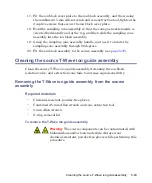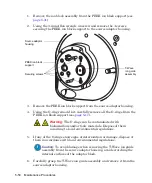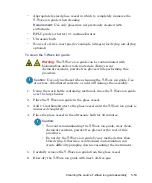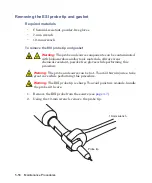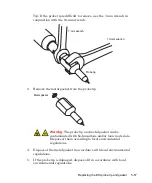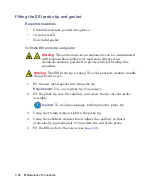
5-58
Maintenance Procedures
Fitting the ESI probe tip and gasket
Required materials
•
Chemical-resistant, powder-free gloves
•
10-mm wrench
•
New metal gasket
To fit the ESI probe tip and gasket
1. Fit the new metal gasket into the probe tip.
Requirement:
Use a new probe tip, if necessary.
2. Fit the probe tip over the capillary, and screw the tip onto the probe
assembly.
3. Using the 10-mm wrench, tighten the probe tip.
4. Using the nebulizer adjuster knob, adjust the capillary so that it
protrudes by approximately 0.5 mm from the end of the probe.
5. Fit the ESI probe to the source (see
).
Warning:
The probe and source components can be contaminated
with biohazardous and/or toxic materials. Always wear
chemical-resistant, powder-free gloves while performing this
procedure.
Warning:
The ESI probe tip is sharp. To avoid puncture wounds, handle
the probe with care.
Caution:
To avoid gas leakage, fully tighten the probe tip.
Summary of Contents for SYNAPT G2
Page 18: ...xviii Table of Contents...
Page 46: ...2 8 Starting Up and Shutting Down the Mass Spectrometer...
Page 66: ...3 20 Configuring the LockSpray Source...
Page 228: ...B 24 External Connections 7 Click Next Result The software installs 8 Click Finish...
Page 232: ...C 4 Materials of construction and compliant solvents...

